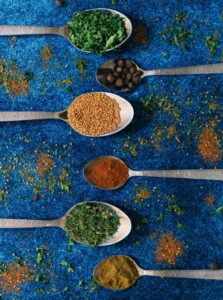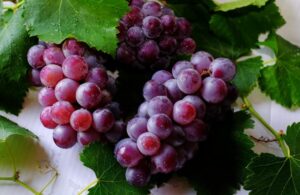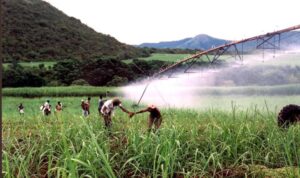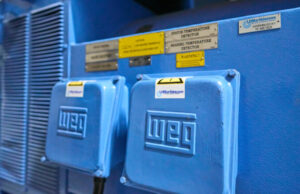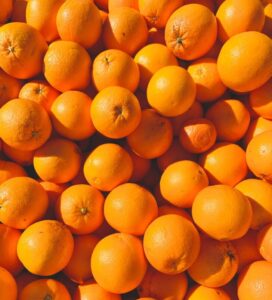Introduction
- Citrus comprises the following broad categories: oranges, soft citrus, grapefruit, and lemons and limes.
- These can be consumed as fresh fruit or processed for juice making, juice concentrates and dried fruit production. Citrus fruit can also be processed as essential oils obtained from fruit peels.
- These are used by the flavour houses to add flavour to drinks and food, by pharmaceutical companies, in aromatherapy and by the cosmetics industry.
International business environment
- The top producers of oranges are Brazil, China, EU, Mexico and Egypt (SA is at number 7) (USDA, 2025).
- The top exporters of oranges are Egypt, SA, US, EU, and Turkey (USDA, 2025).
- Top importers of oranges are the EU, Russia, Saudi Arabia, Iraq, and the UAE (USDA, 2025).
- The top producers of tangerines/mandarins: China, EU, Turkey, Morocco, and US (USDA, 2025). SA is at number 7, but she is the third largest exporter.
- The top producers of grapefruit are China, Mexico, South Africa, US, and Turkey. SA is the top processor and in position 2 for exporters (USDA, 2025).
- The top producers of lemons and limes: Mexico, Turkey, EU, Argentina, and the US. SA is at number 6. The top exporters are Mexico, Turkey, and SA (USDA, 2025).
Further reference:
- Find the updates of different citrus fruit at www.freshplaza.com and the bi-annual “Citrus: World Markets and Trade” from the USDA at https://apps.fas.usda.gov/psdonline/circulars/citrus.pdf
- The World Citrus Organisation (WCO) was launched in 2019. See https://worldcitrusorganisation.org.
South Africa: imports and exports
Citrus makes up 51% of South Africa’s fruit exports (FPEF, 2025).
- In 2024, oranges were exported to Europe (38%), Far East & Asia (18%), Middle East (21%), North America (9%), Russia (7%), and the UK (5%) (FPEF, 2025).
- Lemons went to Europe (39%), Middle East (31%), Russia (9%), UK (8%) and North America (7%), and Far East & Asia (5%) (FPEF, 2025).
- Grapefruit was exported to Europe (39%), Far East & Asia (32%), Russia (12%), North America (9%), UK (4%) and the Middle East (3%) (FPEF, 2025).
- Soft citrus went to Europe (31%), UK (16%), Far East & Asia (13%), Middle East (13%), North America (12%), Russia (10%) (FPEF, 2025).
Further reference:
- The annual Fresh Fruit Exporter Directory by the Fresh Produce Exporters’ Forum (FPEF), and the Food Trade SA publication from Perishable Products Export Control Board (PPECB) give trade statistics for the citrus and other fruit sectors. Download these at https://fpef.co.za and https://ppecb.com/documents respectively.
- The Citrus Growers Association website – www.cga.co.za – has information on packed and shipped volumes which is updated weekly during the citrus season. All growers of export citrus who pay the levy, and exporters who are registered with FPEF (Fresh Produce Exporters Forum) have access to this information, as do members of the CMF (Citrus Marketing Forum).
- Arnoldi M. 2025, February 18. “Inefficient logistics cost citrus industry R5.2bn in the latest season “. Engineering News. Available at www.engineeringnews.co.za/article/inefficient-logistics-cost-citrus-industry-r52bn-in-the-latest-season-2025-02-18
- Ramírez S. 2025, February 11. “How Trump’s offensive against South Africa could potentially harm its citrus industry”. FreshFruitPortal. Available at www.freshfruitportal.com/news/2025/02/11/how-trumps-offensive-against-south-africa-may-harm-the-citrus-industry
- Chadwick J. 2025, February 11. “India a golden opportunity for SA’s citrus industry”. Food for Mzansi. Available at www.foodformzansi.co.za/india-a-golden-opportunity-for-sas-citrus-industry/
- Reporter. 2025, January 30. “Intercitrus discusses the WTO panel on phytosanitary measures for South Africa with the Ministry of Economy”. Fresh Plaza. Available at www.freshplaza.com/africa/article/9700330/intercitrus-discusses-the-wto-panel-on-phytosanitary-measures-for-south-africa-with-the-ministry-of-economy/
- Staff reporter. 2024, December 5. “EU Green Deal a ticking timebomb for SA agri exports”. Freight News. Available at www.freightnews.co.za/article/eu-green-deal-ticking-timebomb-sa-agri-exports
- Chadwick J. 2024, November 20. “Final export figures slightly down after a very unusual citrus year”. Agribook. Available at www.agribook.co.za/final-export-figures-slightly-down-after-a-very-unusual-citrus-year
Local business environment
Regions under citrus are climatically diverse. Examples are:
- the semi-tropical areas of the low-lying eastern seaboard (Zimbabwe, Moçambique, and Limpopo, Mpumalanga and KwaZulu-Natal provinces of South Africa);
- the higher lying subtropical areas (Nelspruit, Letaba, Zimbabwe middleveld);
- the cool coastal areas of the Eastern and Western Cape.
The northern and eastern areas of Southern Africa are all summer rainfall areas, whereas the Western and Southern Cape enjoy a Mediterranean-type climate with winter rainfall. In the Eastern Cape a bimodal rainfall pattern exists with rains mostly occurring in spring and the fall. This broad climatic range from semi-tropical to Mediterranean-type climates has numerous, distinct advantages resulting in a wide range of cultivars being successfully produced from late February/early March through to late September/mid October.
Limpopo (40%), Eastern Cape (25%), Western Cape (19%) and Mpumalanga (7%) have the largest production areas for citrus in South Africa (CGA, 2024).
The largest portion of citrus produce is exported (71%), while the remainder is processed (24%) or sold locally (5%) (CGA, 2024).
Projects and new farmer information
The Info Pak (see “Websites & publications” heading) is a practical introduction to growing citrus.
- CGA Grower Development Company (CGA-GDA) http://cga-gdc.org.za The CGA-GDC champions sustainable programmes like the Economic Transformation of Black Citrus Growers (ETBCG) Programme, the Land Development Support Programme (LDSP), and other initiatives designed to aid the growth and support of growers within the industry.
- Citrus Growers’ Association (CGA) has publications which chart new farmer progress. Visit http://cga.co.za details. Also find the “Transformation” option on the same website.
- Citrus Academy www.citrusacademy.org.za The Citrus Academy was established with the purpose of creating an enabling environment for skills development within the South African citrus industry. The activities of the Academy are funded by CGA levies, with additional project funding sources from a variety of donors.
Grower’s points of interest
South African citrus producers purchase their trees from nurseries accredited by the Citrus Improvement Scheme (CIS). The CIS serves the citrus Industry via a centralised budwood supply farmblock – Citrus Foundation Block (CFB) – near Uitenhage, close to Port Elizabeth. Currently the CFB supplies all certified propagation material to accredited citrus nurseries.
CERTIFIED PROPAGATION MATERIAL
Budwood
New cultivars are obtained from the discovery of mutations in orchards, breeding programmes and/or the importation of promising cultivars from other countries. Many private cultivar management agents have also become involved in this process and the Citrus Growers Association now has their own Cultivar Company for cultivar development. The Agricultural Research Council – Tropical and Sub-tropical Fruit and the Citrus Research International (CRI)’s Citrus Research Centre in Nelspruit are responsible for shoot-tip grafting and pre-immunisation of material with a mild strain of Citrus Tristeza Virus (CTV).
The Citrus Foundation Block is responsible for increase and release of propagation material to the citrus industry. All promising cultivars are planted in suitable trial sites and evaluated by CRI Cultivar Specialists. These processes are mainly conducted by CRI and ARC personnel, but the CIS Advisory Committee and its Pathology and Cultivar sub-committees play and oversight and advisory role in these processes.
All cultivar lines are introduced to CFB after pathogen elimination by means of shoot-tip grafting. These virus-free lines are then pre-immunised with a mild strain of CTV to cross-protect against this disease, which is endemic to southern Africa. Budwood produced are produced inside insect-secure structures according to strict phytosanitary guidelines to prevent new infections. All budwood multiplication blocks are re-tested once every 3 years to ensure their pathogen freedom. Additionally, the CFB is inspected once annually by a team of citrus pathologists and entomologists to evaluate its phytosecurity.
Seed
At present, 23 different rootstock cultivars are grown at CFB, with the aim of supplying good quality disease-free citrus seed as demanded by the southern African citrus industry. Surplus seed is exported to countries such Afghanistan, Angola, Australia, Botswana, China, Chile, Democratic Republic of the Congo, Dominican Republic, Egypt, Kenya, Morocco, Mozambique, Namibia, Portugal, Réunion, Spain, Thailand, United Arab Emirates, Zambia and Zimbabwe.
Seed from the following rootstock cultivars are available in commercial quantities from CFB (find the Seed Order Form at www.citrusres.com/cri-divisions ).
- Benton citrange
- C35 citrange
- Carrizo citrange
- Cleopatra mandarin
- Flying Dragon
- M×T (Minneola × Trifoliate)
- Rough lemon Cairn
- Rough lemon Schaub
- Swingle citrumelo
- Troyer citrange
- US812 (Sunki × Benecke)
- Volckameriana
- X639 (Cleo × Trifoliate)
- Yuma citrange
Phytosanitary quality of seed produced at CFB. Due to the general disease-free status of the CFB, the fact that very few pests and diseases are seed transmissible, and the safe rootstock seed processing and treatment procedures employed by the CFB, the certified rootstock seed from the CFB can be regarded as Safe Seed (CFB Safe Seed 2021), and generally meets the import requirements for most countries.
NURSERY CERTIFICATION
Nurseries producing certified trees must be certified in accordance with a quality management system and are audited twice a year for this purpose. A certified tree must be made from certified propagation material, tested for soilborne pathogens 4 times per annum, and found to be free of harmful pests and pathogens before delivery. (Find CIS Tree Standards at www.citrusres.com/cri-divisions)
The CIS supplies seed and budwood to any nursery wanting to make citrus trees; however, only nurseries participating in the SA Nursery Certification Scheme will be audited and certified. The list of certified nurseries can be downloaded at www.citrusres.com/cri-divisions.
Source: Adapted from the Citrus Research International website, www.citrusres.com/cri-divisions.
National strategy and government contact
For the country’s champion agricultural export to do better, additional market access and port efficiency are crucial. Both have been given priority under the newly signed Agriculture and Agro-processing Masterplan.
The National Development Plan (NDP) recognised the potential of commercial agriculture for job creation. In setting its targets for job creation, the NDP recognised:
- The employment requirement to produce citrus fruit was estimated at one worker per hectare of an estimated 60 000 translating into about 60 000 workers employed on citrus farms.
- Direct downstream labour requirements for citrus were estimated at one labourer per 2 500 cartons packed: with about 100 million cartons packed per year, some 40 000 jobs were created in packing plants for a period of six months, or 20 000 full-time equivalents.
- In addition, there were labour requirements for transportation, warehousing, port handling, research and development, and processing
Citrus – like several other labour-intensive sectors like table grapes, apples, macadamias, pecans and avocadoes – has already reached and gone beyond the targets set by the NDP (BFAP, 2020, 2019).
Find the Agricultural Product Standards Act: Regulations: Grading, packing and marking of citrus fruit intended for sale in South Africa at www.gov.za/documents/agricultural-product-standards-act-regulations-grading-packing-and-marking-citrus-fruit..
Role players
Further reference:
Companies
- Find the exporter lists on https://fpef.co.za.
Associations
- The general “Fruit” page has contact details for the Fresh Produce Exporters’ Forum and other relevant bodies.
CGA group of companies (details above):
- CGA Cultivar Company
- Citrus Research International (Pty) Ltd. (CRI)
- Citrus Foundation Block: Uitenhage
Citrus Marketing Forum Export agents, growers of export citrus and other stakeholders have an opportunity to voice their opinions and discuss the various markets. Estimates for the various commodity types are also discussed and the meeting is therefore made aware of the destination of the fruit and can discuss alternative destinations and advise the export agents accordingly.
Parastatal
- National Agricultural Marketing Council (NAMC) Agricultural industry Trusts (including the citrus one) are administered here.
- Perishable Products Export Control Board (PPECB) PPECB provides internationally preferred food, safety, quality and assurance services to promote and instil confidence in South African products. Contact details of all their regional branches are available on their website.
Training and research
- Citrus Academy The Bursary Fund supports students and a variety of academic institutions all over South Africa, and is paired with work experience and exposure programmes. The Citrus Academy also develops learning programmes and learning media that is used widely to enable and support skills development in the citrus industry. The website of the Citrus Academy has been designed as a functional tool where visitors can apply for bursaries, look for qualified candidates, find learning media and resources, access learning programmes, get involved in learning events, and catch up with the latest news of the Skills Development front.
- Learnerships and apprenticeships are a combination of on-the-job learning along with some theoretical training. The major part of the training can be offered on the farm. Find information on learnerships on the “Agricultural education & training” page, or on the AgriSETA website, www.agriseta.co.za (under “Skills delivery” option).
Websites and publications
- The websites of the associations involved are a useful place to start when looking for information e.g. www.cga.co.za and www.citrusres.com.
- The Citrus Growers Association publishes a Citrus Statistics booklet every year in about May. This publication is free to all growers and members of the Fresh Produce Exporters Forum (FPEF).
- Find the USDA Foreign Agricultural Service (FAS)‘s Citrus Semi-annual for South Africa on the Internet.
- Raath P. (ed.). 2021. Handbook for Fertilisation of Citrus in South Africa. Mbombela: Citrus Research Institute.
- The annual Bureau for Food and Agricultural Policy (BFAP) Baseline looks at fruit generally before zooming in closer on citrus fruit. Find the document at www.bfap.co.za.
- Check whether the annual Citrus Market Value Chain Profile is still being published at www.dalrrd.gov.za, website of the Department of Agriculture, Land Reform and Rural Development (DALRRD) (see the “Old website” option). Also look for (i) Brochure grapefruit, (ii) Brochure Orange, (iii) the Info Pak Cultivation of Citrus, and (iv) Step-by-step Export manual for the South African fruit industry.
- The Cultivation of Citrus and Citrus Pests in the Republic of South Africa, two publications published by the ARC-Tropical and Subtropical Crops. Tel: 013 753 7000.
- Call the ARC-Agricultural Engineering at 012 842 4017 or email iaeinfo [at] arc.agric.za for the publication Processing of Citrus Fruit (Grapefruit, lemons, oranges).
- CD Roms from the ARC-PHP (Plant Health and Protection) include: (i) Crop Pests, vol. 2: Citrus and Other Subtropicals (ii) Medically Important Spiders and Scorpions of Southern Africa. Write to booksales [at] arc.agric.za or infopri [at] arc.agric.za.
- Citrus is dealt with in the publication “Fruit and nut production in KZN“, which can be downloaded at www.kzndard.gov.za.
- The AgriSETA Assessment Guide Primary Agriculture “Monitor the establishment of a crop” includes orchard trees. Another relevant learner guides include “Harvesting agricultural crops”.
- Find the Orange Tree Information page at https://wikifarmer.com/orange-tree-information/
- Local and international links are provided on role player websites.
- The South African Fruit Journal is published bi-monthly and distributed to growers free of charge. Copies can be purchased – refer to www.safj.co.za.
- The photo gallery www.vitalbugs.co.za/citrusgallery.asp shows the different pests of citrus fruit.
- Previous documents from the NAMC and DALRRD have looked at South Africa’s trade in oranges. Find the South African Fruit Trade Flow and the TradeProbe at www.namc.co.za.
Some articles
- See articles listed earlier on this page.
- Reporter. 2025, March 31. “Citrus levy income up 247% as industry invests in exports and research”. Fresh Plaza. Available at www.freshplaza.com/africa/article/9718592/citrus-levy-income-up-247-as-industry-invests-in-exports-and-research
- Reporter. 2025, March 14. “South Africa citrus industry targets growth amid challenges”. Fresh Plaza. Available at www.freshplaza.com/africa/article/9713933/south-africa-citrus-industry-targets-growth-amid-challenges
- Reporter. 2025, January 7. “CGA appoints Dr Boitshoko Ntshabele as new CEO to lead citrus industry advancement”. IOL. Available at www.iol.co.za/business-report/economy/cga-appoints-dr-boitshoko-ntshabele-as-new-ceo-to-lead-citrus-industry-advancement-b5b0ecbc-0718-4f75-8c94-2df4f88ca5bd
- Tembo P. 2024, October 10. “Citrus farmers profit from juice market amid export challenges”. Food for Mzansi. Available at www.foodformzansi.co.za/citrus-farmers-profit-from-juice-market-amid-export-challenges
- Bloomberg. 2024, July 4. “A rare South African export success is threatened by crumbling ports”. Engineering News. Available at www.engineeringnews.co.za/article/a-rare-south-african-export-success-is-threatened-by-crumbling-ports-2024-07-04
- Maxwell M. 2023, August 15. “Intercitrus calls for tougher EU stance on RSA citrus imports”. FruitNet. Available at www.fruitnet.com/eurofruit/intercitrus-calls-for-tougher-eu-stance-on-rsa-citrus-imports/255502.article
- Meintjes F. 2023, August 7. ‘EU CBS rules “unscientific and irrational”’. Eurofruit. Available at www.fruitnet.com/eurofruit/eu-cbs-rules-unscientific-and-irrational/255354.article
- Majola G. 2023, May 17. “Citrus industry faces several challenges that threaten its sustainability”. Business Report. Available at www.iol.co.za/business-report/economy/citrus-industry-faces-several-challenges-that-threaten-its-sustainability-1bec2e7c-266d-4edb-b009-726e3dd5469b
- Read the blog “An alternative to Durban” at https://agribook.co.za/blog/an-alternative-for-durban/.

